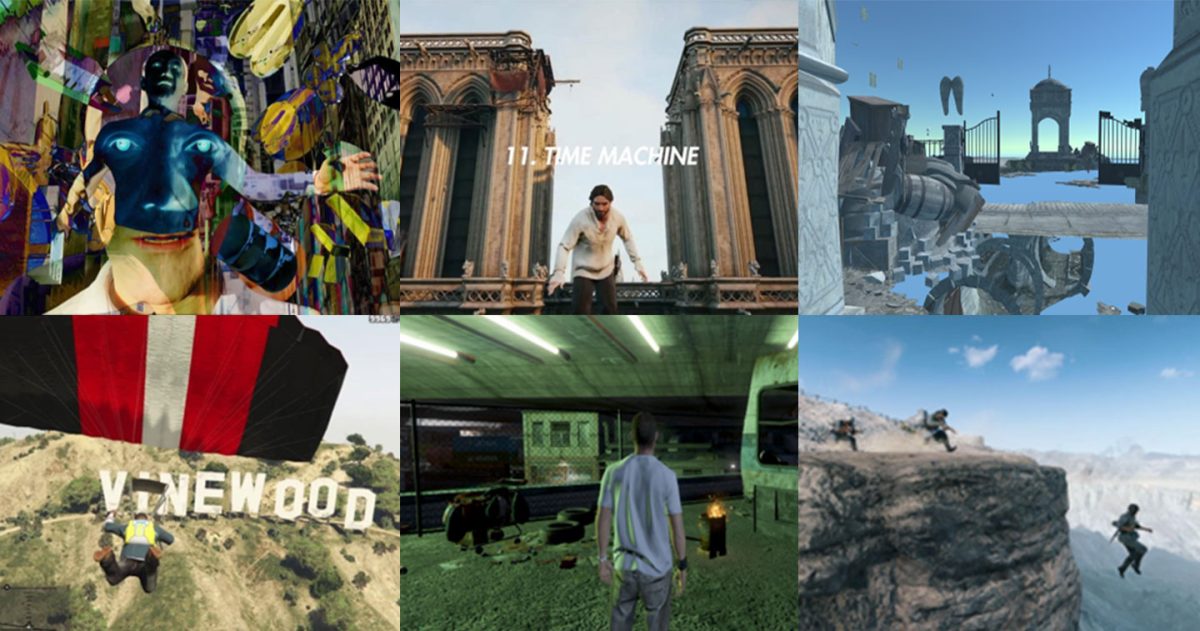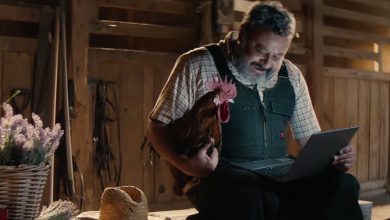SINGAPORE — This May, reimagine the metaverse and find art in unexpected digital spaces with Open Systems (OS), Singapore Art Museum (SAM)’s new initiative that surveys the ever-evolving nature of technology and its role in art and exhibition making.
Examining the impacts of contemporary digital culture on creative expression through creative code, software, and digital video, OS is the first initiative in Southeast Asia presenting online exhibitions, interventions and virtual programs where the sites of their production – the screen, the browser, and the platform – serve as the locus for both artistic expression and inquiry.
Eugene Tan, Director of SAM, said, “At SAM, it is our mission as a contemporary art museum to lead conversations about art today and how we can push the boundaries of what contemporary art can encompass. As SAM’s first dedicated initiative exploring technology and virtual spaces as sites for exhibition and art production, OS seeks to present innovative, immersive, and interactive artist projects that reimagine the possibilities for art experiences in the digital sphere and offer critical reflections on the wider landscape of digital culture. Through this, we hope to inspire renewed perspectives and foster dialogue on the future of art and newfound communities in contemporary virtual terrains.”
The first iteration of this initiative makes its debut in the digital sphere with Open Systems 1_Open Worlds (OS1), a virtual exhibition that explores the relationship between real and virtual worlds through video games and digital culture. From May 04 to August 10, audiences can access opensystems.sg and interact with 18 artworks featuring artists and thinkers from 14 different countries who reimagine digital realms and the limitations of virtual environments through film, music videos, video essays and interactive computer games that expose how the patterns of economic and social inequities of lived experience may also be observed in virtual spaces.
Gradually unfolding with six themed chapters that are refreshed with three new artist projects every two weeks, OS1 adopts an introspective riff off “Open World” gaming, reflexive of the supposed autonomy these free-roaming environments provide to users. Exploring themes of privatization, artificial scarcity and inequalities that transfer between lived and digital realms, OS1 presents the question considering how games and virtual spaces may function as sites to rehearse alternative and novel modes of social, political, and spatial organization.
Duncan Bass, Curator of OS, explained, “The selection of artists and works for OS1 is guided by an interest in expanding conventional expectations of digital exhibitions and popular conversation surrounding the ‘metaverse’ highlighting virtual spaces as potent sites to better understand pertinent issues of today across geographical and sociological boundaries. In many ways, video games combine and extend tendencies that defined contemporary art for the past several decades, including moving images and relational art forms. In exploring video games as a site of creation and innovation, OS1 hopes to invite audiences to reflect on our positions as consumers of popular digital culture and media that permeate our everyday lives.”
OS1.1_Virtual Capital | May 04 to 18
Lawrence Lek, Alice Bucknell, Bahar Noorizadeh, Rudá Babau & Waste Paper Opera (Klara Kofen, James Oldham, Gary Zhexi Zhang, Anna Palmer)
Titled Virtual Capital, the opening chapter of OS1 draws audiences into worlds where global capital and virtual economies occupy seats of political power and class within digital societies. Through satirical storytelling and science fiction narratives of imagined investment schemes and architectural development projects, the artworks demonstrate how virtual cultures simultaneously react to and reflect tangible impact on real, lived experiences.
In Pyramid Schemes, Lawrence Lek combines virtual reality with scenes from the video game Assassin’s Creed with other simulated environments, offering a study of the evolution of architecture and how it influences real-world issues of migration and access. Alice Bucknell similarly investigates the role of architecture and its contribution to systems of global injustice and the climate emergency with E-Z Kryptobuild, a scam crypto company offering a selection of celebrity architect-designed utopias to the one percent. On the other hand, Bahar Noorizadeh’s film Free to Choose is a new commission exploring speculative finance based on her 2021 science-fiction short story, “The Red City and the Planet of Capitalism.” The film follows a cast of historical and fictional characters travelling from Hong Kong, in the midst of 1997 financial crisis, to the year 2047 in order to borrow money from their future selves and descendants.
OS1.2_WoW, Unite! | May 18 to June 01
Cat Bluemke, Joshua Citarella & Jacob Hurwitz-Goodman, Mario Mu
Exploring video games as unexpected sites for collective organization, WoW, Unite!, aptly references the familiar rallying cry for class solidarity – “Workers of the world, unite!” – while serving as a nod to the popular game World of Warcraft (WoW). Featuring a series of videos and video game essays, the second chapter highlights and considers labour rights issues and organisational conditions in the video game industry.
Cat Bluemke’s Gameworkers & Guildworkers offers a comparative critique of the working conditions of virtual and real-world builders by comparing the construction of the Notre Dame Cathedral of Paris and its virtual counterpart in the video game Assassin’s Creed Unity (2014). DKP is Market Socialism by Joshua Citerella and Jacob Hurwitz-Goodman explores a longstanding phenomenon observed in the popular multiplayer game, World of Warcraft, where user communities had created their own system of goods distribution free from systems of debt and inequality. The chapter concludes with Mario Mu’s Sites of Encounter, a video work surveying systems of labour in industrial and corporate environments, listening in on intimate existential dialogues between its characters as they navigate modern labor conditions.
OS1.3_Landscapes of the Political Imaginary | June 01 to 15
Zheng Mahler, Shabtai Pinchevsky, and Firas Shehadeh
In the third chapter, artists delve into the concept of the nation-state, which is as much constructed and defined in physical environments as it is in the collective imagination. With this forming its premise, Landscapes of the Political Imaginary invites viewers to reassess their understanding of video games and the underlying assumptions that have been built into their virtual landscapes.
This chapter features OS’s first video game commission, Zheng Mahler’s The Green Crab: A Diagram of Auspicious Spatial Organisation. A gamified reiteration of its previous presentation along SAM’s hoardings on Bras Basah and 8 Queen Street, the work is an electrifying map of an East Asian feng shui city. Juxtaposing Hong Kong’s cyberpunk image and Singapore’s urban development, this interactive video game adopts a spiritual lens, observing state-led urbanism against the backdrop of guiding principles in Chinese alchemy. The remaining two artworks of the chapter take a deep dive into history and identity across various landscapes. Shabtai Pinchevsky presents An Abridged Draft for a Letter to Leila Khaled, inviting viewers on an aerial tour of Palestine’s digitised landscape reconstructed through the superimposition of rare archival photographs. In contrast, Firas Shehadeh’s Like An Event In A Dream Dreamt By Another: Rehearsal draws from internet memes, video games, and the contemporary internet culture of Twitch streaming and Grand Theft Auto 5 modding communities, projecting current digital concepts on the diasporic lived experiences of home and identity for Palestinian youth.
OS1.4_Unrealpolitik | June 15 to 29
Yeyoon Avis Ann & George Chua, Clemens von Wedemeyer, and Grayson Earle
Playing on the 3D computer graphics engine “Unreal Engine” and the “realpolitik” politics of the early ’90s, the artworks in Unrealpolitik focus on the tensions between exaggerated images of violence prevalent in video games and the sterility of their virtual cityscapes, inviting viewers to question the assumed neutrality of the underlying ideologies embedded in gaming software, while highlighting the potential for intervention and political resistance in gamified environments.
The fourth chapter features Yeyoon Avis Ann & George Chua’s Neo-Punggol. In this music video, the exaggerated violence of video games conceals real-world violence, reflecting the mania of ongoing global information warfare. Clemens von Wedemeyer’s 70.001 is a speculative virtual rendering of The Monday demonstrations of East Germany in 1989, creating an unending flow of protestors that never tire, packing the digital streets of Leipzig with a sea of animated clones. Lastly, why don’t the cops fight each other? by Grayson Earle engages with Grand Theft Auto’s modding communities, revealing loopholes within the seemingly limitless world of modding in an introspective critique on police brutality across virtual and physical realms.
OS1.5_Dematerialised Zones | June 29 to July 13
Hayoun Kwon, Total Refusal, and Antoine Chapon
In the penultimate chapter of OS1, the artists expand on sites of conflict as liminal spaces to subvert stereotypical perceptions of violence associated with video games, reclaiming these spaces as sites of healing, in search of escape and peace.
Inspired by the testimony of a former soldier who had entered the Demilitarised Zone (DMZ) dividing North and South Korea, Hayoun Kwon’s 489 Years explores the DMZ as a paradoxical place where immense anxiety and sublime beauty coexist. This is followed by the pseudo-Marxist media guerrilla collective Total Refusal, presenting How to Disappear, an anti-war movie that searches for peace on the battlefields of an online war game. Set against the backdrop of picturesque war landscapes in Battlefield V, the work explores the hidden history of deserters, paying tribute to disobedience and resistance in digital and real-life warfare. Lastly, Antoine Chapon’s My Own Landscapes takes introspection on the practice of virtual reality simulator games adopted by the American and French armies, simultaneously used for recruitment programs at the beginning of one’s employment and to treat post-traumatic stress disorders for veterans returning from war.
OS1.6_Intimate Encounters | July 13 to 27
Sara Sadik, Kara Güt, and Xafiér Yap
As the title suggests, the sixth and final chapter brings OS1 to a close with a series of artworks reflecting on notions of identity and intimacy within virtual realms. Although the last two chapters draw on the nostalgic and familiar sights and sounds of both old school and contemporary video games, these works demonstrate how the character development of role-playing games is not unlike the process of personal identity construction, where one’s “self” is nurtured from one’s relationship with others and their surroundings.
Known for her ability to create space for emotional expressions in her work, Sara Sadik presents Khtobtogone, a love story set in Grand Theft Auto 5. Based on the experiences of Marseille’s Maghrebi community, the work coaxes a refreshing vulnerability that challenges traditional heteronormative masculinity and one’s formative coming of age in contrast to the violent ideations associated with the game. In an ode to fandom culture and new forms of human intimacy in today’s internet age, Kara Güt’s Hurt/Comfort is presented through a series of confessional scenes between a streamer and their chat audience while playing Elden Ring. Referencing hurt/comfort fanfiction, the streamer’s role and emotional state ebbs and flows across parasocial lines as the two parties convene through the screen. To conclude this series of artist projects, Xafiér Yap presents 2nd Puberty, adopting the form of a 2D video game where viewers can participate as players and navigate a game world amongst the virtual judgement of its side characters and the players’ monologue. Using video games as portals to reimagine time, space and ways of being, 2nd Puberty seeks to introduce new ways of connecting, communicating and understanding ourselves and one another.














